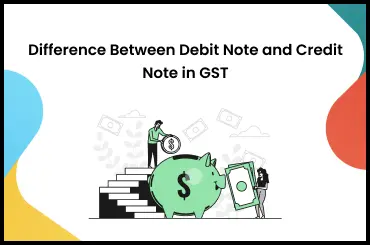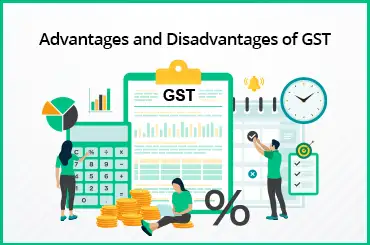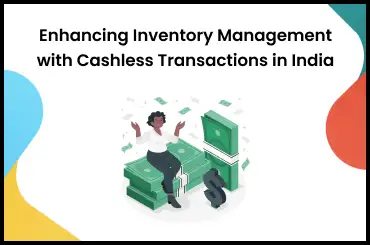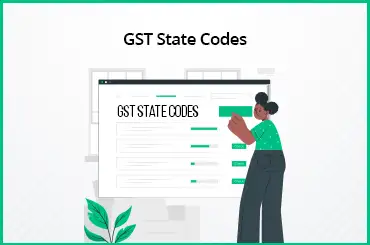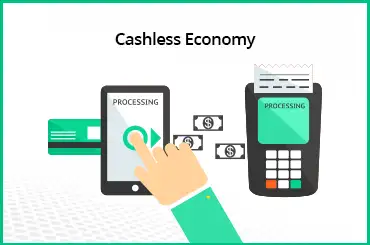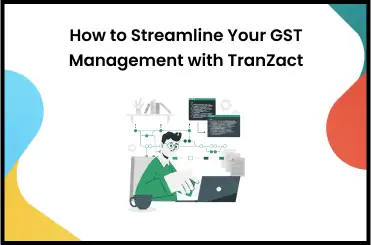Since the implementation of the Goods and Services Tax (GST) and GST invoice, there have been numerous discussions on the subject. GST invoice bills, the fundamental element of this tax system, are often the subject of prominent queries. GST invoices have also gained much importance since the introduction of GSTR 2B.
Below you will find a brief explanation of what this document is and the several guidelines attached to it. Continue reading!
What Is GST Invoice?
A GST invoice is a statement or receipt for goods or services delivered to a customer by a merchant or service provider. Along with the total sum payable, it precisely details the goods and services included. The GST invoice also states the price of goods or services before the Central Goods and Services Tax (CGST) and State Goods and Services Tax (SGST) is applied.
The taxes associated with each good or service a customer acquires from a vendor or provider, are also shown on a GST invoicing bill.
A GST tax invoice serves as a demand for payment from the customer and as a record of payment afterward.
Who Should Issue GST Invoice?
According to GST laws, any registered person who purchases goods or services from an unregistered party must submit a tax invoice and a payment voucher. The category of the registered supplier determines the type of invoice that needs to be provided.
A registered person must issue a tax invoice if they are making or receiving supplies from unregistered individuals. However, a registered person must submit a bill of supply rather than an invoice if they solely deal in exempted supplies or are a composition dealer, both of which are required by the law. If the value of the supply is less than Rs. 200, an invoice need not be generated, provided certain conditions are met.
Prescribed GST Bill Format
According to Section 2(66) of the Central Goods and Services Tax Act of 2017, Section 31 must be consulted to comprehend the precise style of a tax invoice. Even though Section 31 provides a fundamental framework for GST invoice types, it is not exhaustive.
However, section 31 specifies conditions or data that must be included in such an invoice to be recognized as a valid GST bill. For instance, Sec 31 states that a GST invoice must contain a Goods and Services Tax Identification Number (GSTIN), the name and address of the issuer, the place of supply, etc. The contents of the GST invoice are listed below. Such an invoice can be both manual and electronic.
What Are the Mandatory Fields GST Invoice Should Include?
There is a predetermined GST invoice format. According to Rule 54 of the CGST Act of 2017, GST tax invoices must include the following details:
- Name and GSTIN of the supplier.
- The name of the state which is the supply location, in case of a supply in the course of inter-state trade or commerce.
- GST invoice number.
- Date of issuance.
- Invoice type.
- Shipping and billing address.
- Name of the customer.
- GSTIN of the customer if registered.
- Products & service details such as quantity, description etc.
- SAC code, HSN code, or Unique Quantity Code thereof.
- The rate of CGST, IGST, UTGST, and SGST charged.
- The total value of the supply of goods or services or both.
- Total tax amount and discounts, if any.
- Reverse charge.
- Signature of the invoice issuer.
GST Tax Invoice Rules
To comply with the criteria regarding invoice contents, issuers must follow certain GST invoice rules that specify the "what" and "how" of these details.
GST Invoice Serial Number Rules
Rule 46 of the CGST acts states the rules regarding the serial numbers on the GST invoice. The taxpayer must follow these rules diligently:
- The invoice numbers must be either consecutive or sequential.
- They must have an alphanumeric combination and should be distinct for every specific fiscal year.
- A serial number can only have a maximum of 16 characters.
- When the supply of goods or services takes place within a state, then only States Goods Service Tax and Central Goods and Service Tax is applied.
- Any transactions outside the issuer's state must be subject to an additional tax known as IGST.
GST Invoice Signature Rules
One of the required fields in a GST invoice is the issuer's signature under the CGST regulations. The requirements for a legal signature are as follows:
As long as the bill follows the requirements of the Information Technology Act of 2000, it can be signed either manually or digitally.
The supplier or a duly authorized agent must sign the GST invoice bill.
A business secretary, an attorney in practice, a chartered accountant, a retired officer of the Commercial Tax Department, or a regular employee speaking on the supplier's behalf may be the "authorized representative" as defined in section 116(2).
GST Invoice Payments Rules
Another requirement under the CGST Act relates to the case where a GST-registered person purchases anything from a non-registered vendor. Here, there may be two cases.
- When a registered person purchases anything from an unregistered entity, the latter is required to provide a tax invoice.
- The registered person must issue a bill of supply rather than an invoice bill if they receive supplies that are GST-exempt.
Now, you could think that it might become challenging to always send an invoice following such detailed criteria immediately following each purchase.
The Indian government has also set guidelines on the time of raising a GST invoice to simplify this process, i.e., it has to be done within 30 days from the date of supply of service.
When Should You Issue GST Invoice?
In some circumstances, it might be challenging to generate a GST invoice as soon as goods are delivered or services are provided. The Indian government has established a standard time limit for suppliers to ease the situation. Let's understand how:
On Goods (Normal case)
Such an invoice must be created by the providers of the goods on or before the date the relevant articles are removed. Removal of goods is defined under Section 2 (96) of the CGST Act, 2017, in one of two ways:
- Items sent to the addressee for delivery.
- Items that the recipient or an authorized representative of the recipient picks up from the supplier.
On Goods (Continuous Supply)
The supplier may issue a GST invoice before the account statement is generated or payment is received, if the invoice relates to a receiver with whom it maintains a consistent order of business.
On Services
A GST invoice bill for services rendered must be issued within 30 days of the relevant services being rendered.
On Banks and NBFC
The limit for submitting a GST receipt for financial services provided by banks and other financial institutions is 45 days instead of 30 days for all other services.
Types of Invoices
There are four types of invoices under GST, which are as follows:
Bill of Supply
The main distinction between a tax invoice and a bill of supply is that the former charges 0% or no GST. Thus, there are two situations in which you may send this type of invoice.
- When a GST-registered supplier selects the composition scheme.
- When a GST-registered supplier sells products and services that are exempt from GST.
Therefore, based on this document, the beneficiary cannot claim an input tax credit.
In addition, if a registered entity deals in both exempt and taxable services/ goods, it may issue an all-inclusive invoice-cum-bill of supply following Central Tax Notification No. 45/2017.
Aggregate Invoice
If a seller sends an unregistered customer many invoices, each for less than Rs. 200, the seller may send the buyer a single invoice with the total of all the invoiced amounts.
Reverse Charge Invoice
It is one of the invoices in GST that must be generated by a taxpayer subject to the Reverse Charge Mechanism (RCM). The taxpayer must create a GST invoice for any products, services, or a combination of both that they have received.
The receiver must state that the tax was paid through RCM. Along with paying the supplier, they must also give a payment voucher.
Debit and Credit Note
Such commercial documents are issued when a mismatch is discovered in a tax invoice previously provided for a good or service.
Any of these two circumstances result in the issuance of a debit note.
- The previous tax invoice shows a lower taxable value than it is.
- This tax invoice's tax charge is less than the invoice's real value.
A credit note, on the other hand, is issued for the opposite reasons.
- The invoice's tax or taxable amount is higher than the actual values.
- The customer returns the goods and requests a refund because of an error with the services or goods they received.
Revising Invoices Issued Before
There may be several occasions where an incorrect GST invoice bill is generated. Hence, an option for modifying such invoices is provided.
Before getting the permanent certificate, all sellers must apply for provisional registration. Upon receiving the registration certificate, you must submit the forms within one month. A revised invoice under GST must be issued against any tax invoice issued after GST implementation until the permanent registration certificate is issued.
This revised tax invoice under GST must include "Revised Invoice" and all the previously listed essential information on a tax invoice.
How Many Copies of Invoices Should Be Issued?
Depending on the type of supply, a specific number of invoice copies are provided. This is because each party should retain the document as proof of the transaction.
- For goods:
The issuer must prepare three copies of the invoice for goods.
a. Original copy - Sent to the buyer. b. Duplicate copy - For the people transporting the goods from the supplier to the recipient. c. Triplicate copy - Retailed with the vendor.
- For services:
The issuer must prepare two copies of the invoice for services.
a. Original Copy - The buyer receives the original copy. b. A duplicate copy - Retailed by the supplier for future use.
Way Forward
A GST invoice is the basic proof of the GST paid. Hence, taxpayers must maintain proper invoices. These invoices are crucial to receiving an Input Tax Credit (ITC); ensure you issue this paperwork if you are a registered dealer. Consider obtaining GST invoice software to enable your company to issue accurate invoices and profit from such provisions.
To help your accounting teams with accurate GST-compliant invoicing processes you can rely on TranZact. TranZact is a business automation software that streamlines your sales, inventory, production and purchase processes. It offers accounting integrations with BUSY and Tally for exceptional accounting operations and facilitates generation of GST invoicing easily.
FAQs on GST Invoice
1. What is the difference between an invoice and a GST invoice?
A tax invoice is a document delivered to a customer by a supplier who is registered for GST and lists out the pertinent data of the transaction completed, as opposed to an invoice, which is a document issued by the seller to the buyer outlining the details of the transaction conducted.
2. What is the difference between invoice date and due date?
The day the invoice was created in the bill book is referred to as the invoice date, and the date that the payment is due on the invoice is referred to as the due date.
3. How to issue an invoice under reverse charge?
Under RCM transactions, the recipient or buyer issues an invoice on receipt of goods or services from the supplier. Additionally, when paying the provider, they must issue a payment voucher.
A registered recipient or the buyer may issue a consolidated invoice at the end of the month if the total cost of the supply exceeds INR 5,000 in a day.
On the GST invoice, you must also state that tax was paid on a reverse charge if GST is payable under a reverse charge.
4. Is it important to maintain invoice serial numbers?
Yes, it is necessary to strictly keep the invoice serial number. However, you may alter the format by giving the GST department official a written notice explaining your decision and why.
5. Can I digitally sign the invoice?
According to the CGST rules, it is compulsory for an authorized individual of the company who is issuing the invoice to sign the invoice copy (including debit or credit notes). However, if an invoice follows the rules of the recent Information Technology Act of 2000, then they may even insert their digital signature on it.
6. When issuing tax invoices is not mandatory?
When the value of the supply is below Rs. 200/-, an invoice or a bill of supply is not required.
7. Which sectors are considered special cases in GST invoicing?
Banking, goods, transport agencies, and passenger transport are three sectors where the government allows certain relaxation when it comes to GST invoicing. Relaxations differ in each of these sectors.








